Orthodontic Terms
- Archwire
- Band
- Banding
- Bonding
- Bracket
- Cephalometric X-ray
- Ceramic Brackets
- Crowding
- Debanding
- Debonding
- Elastic (Rubber Band)
- Emergencies
- Extractions
- Gingiva
- Headgear
- Imaging
- Impressions
- Interceptive Treatment
- Interproximal Reduction (IPR)
- Lingual
- Maxillary
- Oral Hygiene
- Orthodontic Adjustment
- Orthodontic Photographs
- Orthodontic Records
- Orthodontist
- Orthognathic Surgery
- Overbite
- Panoramic X-ray
- Radiograph
- Retainer
- Retention
- Straight Wire Appliance
- Surgery
- Two-Phase Treatment
- Wax
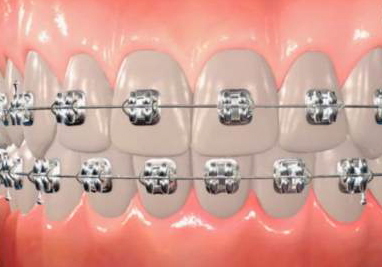
Archwire
A metal wire which is inserted into the brackets that move the teeth into the desired position.

Band
Bands are metal tooth rings that go around the back molars and serve as anchors for the braces. They have hooks on them so that elastics can be worn.

Banding
The process of fitting and cementing orthodontic bands to your teeth.

Bonding
The process of attaching brackets to your teeth using a special safe adhesive.

Bracket
Brackets are the small metal or ceramic modules that are attached to each tooth. They serve as guides to move the teeth and hold the archwire in place.

Cephalometric X-ray
An x-ray of the head that shows if your teeth are aligned and growing properly within the jaws.

Ceramic Brackets
Crystalline, alumina, tooth-shade or clear synthetic sapphire brackets that are aesthetically more attractive than conventional metal attachments.

Crowding
Dental malalignment caused by inadequate space for the teeth.
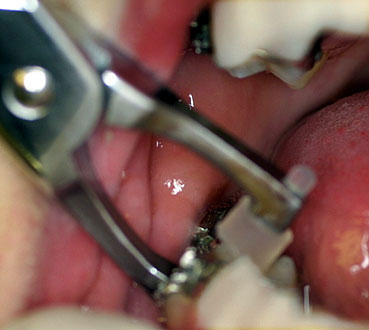
Debanding
The removal of cemented orthodontic bands.

Debonding
The process of removing cemented orthodontic brackets from your teeth.
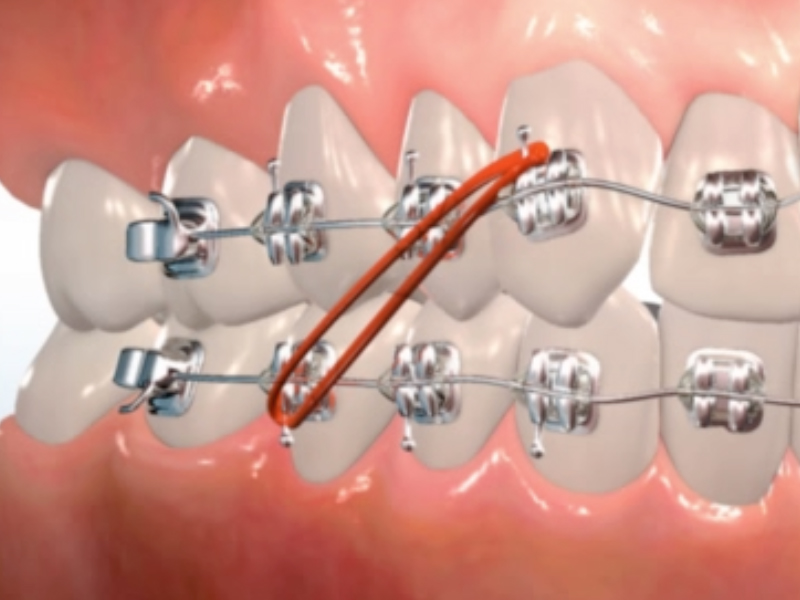
Elastic (Rubber Band)
A small rubber band that is hooked between different points on your appliance to provide gentle, continuous pressure to move your teeth and/or jaws to their new positions. We offer regular or neon colors.
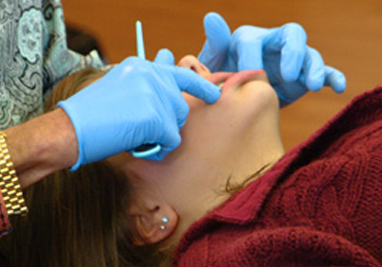
Emergencies
Emergencies do not occur very often, but if they do, our team will respond quickly.

Extractions
Extractions of impacted or problematic teeth to make space for orthodontic treatment.

Gingiva
The tissue that surrounds the teeth, consisting of a fibrous tissue that is continuous with the periodontal ligament and mucosal covering.

Headgear
Generic term for extraoral traction (attached around the back side of the head) for growth modification, tooth movement and anchorage.

Imaging
The process of acquiring representations of structures in either two or three dimensions.

Impressions
The first step in making a model of your teeth. You bite into a container filled with a rubber-type material. That material hardens to produce a mold of your teeth.

Interceptive Treatment
Orthodontic treatment that is usually done between the ages of 7 and 10. The objective of interceptive or early orthodontic treatment is to provide orthopedic intervention, so that later orthodontic treatment is less complex.

Interproximal Reduction (IPR)
Interproximal reduction (IPR) is the removal of small amounts of outer enamel tooth surface between two adjacent teeth. It is a means to acquire additional space to create ideal tooth alignment. Alternative names include: slenderizing, stripping, enamel reduction, and reproximation.
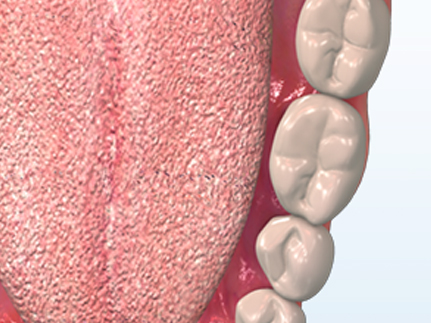
Lingual
Adjacent to the tongue.
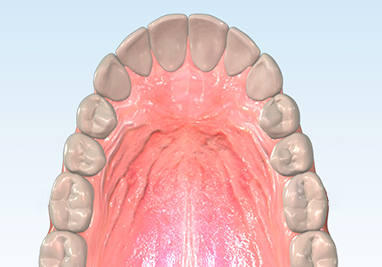
Maxillary
Of or pertaining to the upper jaw. May be used to describe teeth, dental restorations, orthodontic appliances or facial structures.

Oral Hygiene
Effective brushing and flossing is one of the most critical actions needed from patients during braces. Regular visits to the general dentist for examination and cleaning are also essential. The results of inadequate oral hygiene include decalcification (white spots/marks), gingivitis (inflammation of the gums), and periodontal disease (inflammation leading to bone loss).
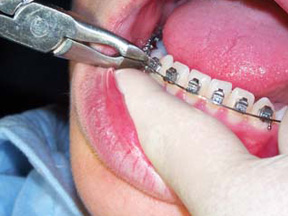
Orthodontic Adjustment
An evaluation of your progress where your wires may be changed to keep your treatment on track and moving forward.
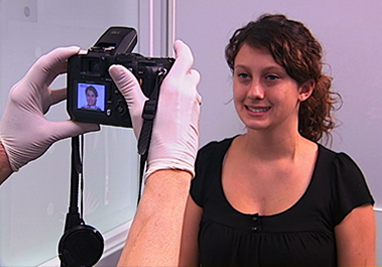
Orthodontic Photographs
Pictures taken upon the completion of treatment show the amazing changes that orthodontics have achieved in both growth and development of the teeth, jaws and aesthetics of the smile. The orthodontist uses the pictures throughout treatment to monitor changes.

Orthodontic Records
These records, which include cephalometric and panoramic x-rays, digital photos and study models, help your orthodontist determine what treatment needs to be done.
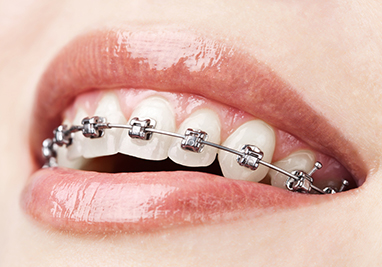
Orthodontist
A dental specialist who has completed an advanced post-doctoral course, accredited by the American Dental Association, of at least two academic years in the special area of orthodontics.

Orthognathic Surgery
Surgery to alter relationships of teeth and/or supporting bones, usually accomplished in conjunction with orthodontic therapy.

Overbite
Vertical overlapping of upper teeth over lower teeth, usually measured perpendicular to the occlusal plane.

Panoramic X-ray
An X-ray taken by a machine that rotates around your head to give your orthodontist a picture of your teeth, jaws, and other important information.
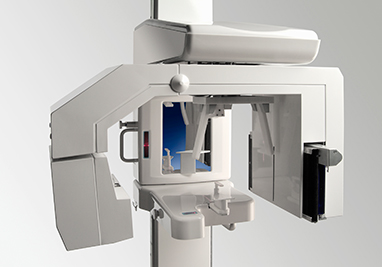
Radiograph
A permanent image, performed digitally in our office, produced by ionizing radiation. Sometimes called an X-ray after the most common source of image-producing radiation.

Retainer
An appliance that is worn after your braces are removed. The retainer attaches to your upper and/or lower teeth to hold them in place. Some retainers are removable, and others are bonded to the teeth.

Retention
The passive treatment period following active orthodontic correction during which retaining appliances may be used.

Straight Wire Appliance
A variation of the edgewise appliance in which brackets are angulated to minimize multiple archwire bends. Brackets and molar tubes have specific orientation in three planes of space.

Surgery
Orthognathic surgery is surgery performed on the bones of the jaws to change their positions. It may be considered for functional, cosmetic, or health reasons. It is surgery commonly performed on the jaws in conjunction with orthodontic treatment, which straightens the teeth.
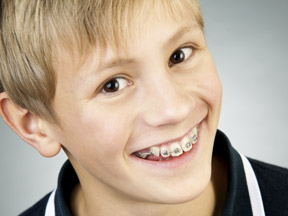
Two-Phase Treatment
Two phase orthodontic treatment is a very specialized process that encompasses tooth straightening and physical, facial changes. The major advantage of a two-phase treatment is to maximize the opportunity to accomplish the ideal healthy, functional, and aesthetic result that will remain stable throughout your life.

Wax
A clear wax used to prevent your braces from irritating your lips or cheeks when your braces are first put on, or as needed. Wax works best when the irritating area is dried well first and then, embedded totally within the pea-sized or grape-sized ball of wax.
Archwire

A metal wire which is inserted into the brackets that move the teeth into the desired position.
Band

Bands are metal tooth rings that go around the back molars and serve as anchors for the braces. They have hooks on them so that elastics can be worn.
Banding

The process of fitting and cementing orthodontic bands to your teeth.
Bonding

The process of attaching brackets to your teeth using a special safe adhesive.
Bracket

Brackets are the small metal or ceramic modules that are attached to each tooth. They serve as guides to move the teeth and hold the archwire in place.
Cephalometric X-ray

An x-ray of the head that shows if your teeth are aligned and growing properly within the jaws.
Ceramic Brackets

Crystalline, alumina, tooth-shade or clear synthetic sapphire brackets that are aesthetically more attractive than conventional metal attachments.
Crowding

Dental malalignment caused by inadequate space for the teeth.
Debanding

The removal of cemented orthodontic bands.
Debonding

The process of removing cemented orthodontic brackets from your teeth.
Elastic (Rubber Band)

A small rubber band that is hooked between different points on your appliance to provide gentle, continuous pressure to move your teeth and/or jaws to their new positions. We offer regular or neon colors.
Emergencies

Emergencies do not occur very often, but if they do, our team will respond quickly.
Extractions

Extractions of impacted or problematic teeth to make space for orthodontic treatment.
Gingiva

The tissue that surrounds the teeth, consisting of a fibrous tissue that is continuous with the periodontal ligament and mucosal covering.
Headgear

Generic term for extraoral traction (attached around the back side of the head) for growth modification, tooth movement and anchorage.
Imaging

The process of acquiring representations of structures in either two or three dimensions.
Impressions

The first step in making a model of your teeth. You bite into a container filled with a rubber-type material. That material hardens to produce a mold of your teeth.
Interceptive Treatment

Orthodontic treatment that is usually done between the ages of 7 and 10. The objective of interceptive or early orthodontic treatment is to provide orthopedic intervention, so that later orthodontic treatment is less complex.
Interproximal Reduction (IPR)

Interproximal reduction (IPR) is the removal of small amounts of outer enamel tooth surface between two adjacent teeth. It is a means to acquire additional space to create ideal tooth alignment. Alternative names include: slenderizing, stripping, enamel reduction, and reproximation.
Lingual

Adjacent to the tongue.
Maxillary

Of or pertaining to the upper jaw. May be used to describe teeth, dental restorations, orthodontic appliances or facial structures.
Oral Hygiene

Effective brushing and flossing is one of the most critical actions needed from patients during braces. Regular visits to the general dentist for examination and cleaning are also essential. The results of inadequate oral hygiene include decalcification (white spots/marks), gingivitis (inflammation of the gums), and periodontal disease (inflammation leading to bone loss).
Orthodontic Adjustment

An evaluation of your progress where your wires may be changed to keep your treatment on track and moving forward.
Orthodontic Photographs

Pictures taken upon the completion of treatment show the amazing changes that orthodontics have achieved in both growth and development of the teeth, jaws and aesthetics of the smile. The orthodontist uses the pictures throughout treatment to monitor changes.
Orthodontic Records

These records, which include cephalometric and panoramic x-rays, digital photos and study models, help your orthodontist determine what treatment needs to be done.
Orthodontist

A dental specialist who has completed an advanced post-doctoral course, accredited by the American Dental Association, of at least two academic years in the special area of orthodontics.
Orthognathic Surgery

Surgery to alter relationships of teeth and/or supporting bones, usually accomplished in conjunction with orthodontic therapy.
Overbite

Vertical overlapping of upper teeth over lower teeth, usually measured perpendicular to the occlusal plane.
Panoramic X-ray

An X-ray taken by a machine that rotates around your head to give your orthodontist a picture of your teeth, jaws, and other important information.
Radiograph

A permanent image, performed digitally in our office, produced by ionizing radiation. Sometimes called an X-ray after the most common source of image-producing radiation.
Retainer

An appliance that is worn after your braces are removed. The retainer attaches to your upper and/or lower teeth to hold them in place. Some retainers are removable, and others are bonded to the teeth.
Retention

The passive treatment period following active orthodontic correction during which retaining appliances may be used.
Straight Wire Appliance

A variation of the edgewise appliance in which brackets are angulated to minimize multiple archwire bends. Brackets and molar tubes have specific orientation in three planes of space.
Surgery

Orthognathic surgery is surgery performed on the bones of the jaws to change their positions. It may be considered for functional, cosmetic, or health reasons. It is surgery commonly performed on the jaws in conjunction with orthodontic treatment, which straightens the teeth.
Two-Phase Treatment

Two phase orthodontic treatment is a very specialized process that encompasses tooth straightening and physical, facial changes. The major advantage of a two-phase treatment is to maximize the opportunity to accomplish the ideal healthy, functional, and aesthetic result that will remain stable throughout your life.
Wax

A clear wax used to prevent your braces from irritating your lips or cheeks when your braces are first put on, or as needed. Wax works best when the irritating area is dried well first and then, embedded totally within the pea-sized or grape-sized ball of wax.












